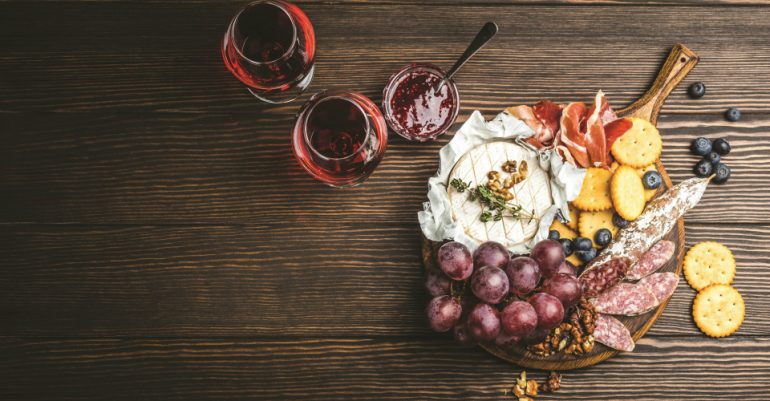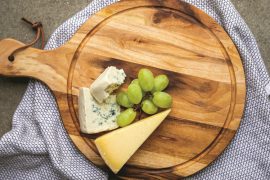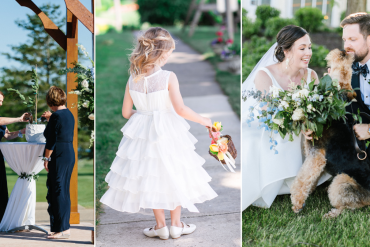By Kristine Hansen
Food and drink pairings can feel intimidating. Will you accidentally ruin the taste of the food you’ve labored over in the kitchen? What if the special wine you picked out doesn’t sing … and tastes terrible instead?
“You can be very playful,” advises Shannon Berry, cheesemonger at Fromagination in Madison, who spent her childhood on a lake near Rhinelander in Northern Wisconsin. After cooking at restaurants in New York City and Portland, Oregon, she returned to Wisconsin, in part because she missed lakeside living.
Your goal should be to bring out flavors you like in each of the beverages and food items, “two like parts of two different things,” says Berry. “You don’t want [the food and drink] to fight each other.” For example, scotch and aged goat cheese both feature bright, grassy notes.
Also consider textures. Does the beverage have a dry finish or is it sweet? Is the mouth feel heavy or light? Keep like with like and you can’t go wrong. “With a wine that is very buttery and silky, you want to match it with a cheese that has that same texture,” advises Amy Wulz, wine educator at Drumlin Ridge Winery in Waunakee who teaches wine classes at the winery as well as at Madison College. Another example: delicate cheeses with delicate wines, like a goat cheese with Chenin Blanc. Not sure if the wine is delicate or not? Look at the alcohol content. Above 12 percent typically means this is an intense wine.
Also, don’t be shy about opting for fall-friendly selections. “People are transitioning from all these cool, crisp whites (wines) from summer,” says Wulz. Chardonnay and Sauvignon Blanc can easily be replaced with Beaujolais and Pinot Noir.
WINNING WINES
Autumn is the perfect time to uncork fruit-forward reds. Berry recommends the fruitiness of a California Zinfandel wine with English Stilton cheese to complement its spicy finish. This is also when spice-rubbed cheeses are fitting, such as Roth’s Gran Queso. “The rind is rubbed with paprika and cinnamon,” says Berry, who would pair this with a spicy Zinfandel.
Bleu Mont Dairy in Dodgeville makes an award-winning Bandaged Cheddar Berry never hesitates to recommend to customers. “It would go great with a Cabernet Sauvignon or Barbaresco (Piedmont, Italy) or even a Glogg (hot spiced wine punch). It can hold up to any of those,” she says.
For Thanksgiving and other fall-season meals, Phil Bilodeau—owner and co-founder of Thief Wine in Milwaukee and Shorewood—can’t get enough of a dry style of Rosé. Apparently neither can his customers: “I’m selling more in September, October and November than I used to,” he says.
Bilodeau also discourages only drinking reds once the outdoor temperature cools. The key is to look for wines without an oaky presence on the palate. “Albariño from Spain is really an underrated food wine,” he says, as is unoaked Chablis (France). But if you want to drink red during the fall, consider Cabernet Franc (minerally with floral and raspberry notes), fruity Beaujolais from France and Nero d’Avola from Sicily, Italy. And don’t forget about Pinot Noir. “You can get great [Pinot Noir] from Burgundy, France; New Zealand; and California,” he says, noting they are “crowd pleasers and low in tannins.”
BEST FOR BEER
Chef Ryne Harwick of Hunt Club Steakhouse in Lake Geneva thinks fall is the easiest season for pairings. “[In the kitchen] I really like to work more with winter spices, like juniper and cinnamon,” he says. “A lot of the heavier beers are more in season that time of year. We’re really moving away from the bright, citrus-y flavored beers.”
One of Harwick’s favorite pairings is roasted butternut squash with a dark beer. “It’s going to have the same body in the mouth feel,” he says. Earthy tones in carrots and beets, too, are ideal while sipping heavy beers, like lagers or porters.
A pairing with local roots that Berry highly recommends is any Oktoberfest craft beer from Wisconsin with Roth’s Monroe cheese, a double cream, washed-rind variety.
CONSIDERING SPIRITS AND DESSERT WINES
You might think ordering an Old Fashioned, which was invented in Wisconsin—and is a staple on every bar and restaurant menu, from college-area dive bars to swank supper clubs, is trite—but maybe not?
An Old Fashioned’s cinnamon and orange flavors are often reflected in autumn cuisine, says Harwick.
What can be really fun when mapping out a meal is pairing dessert (your cheese course, perhaps?) with a drink, giving it the same consideration as you did the appetizer or main entrée. “If you’re searing a really pungent, creamy cheese or a really heavy blue, you should go with a dessert wine or late-harvest wine,” says Wulz. Dry, nutty wines with caramel notes like Sherry and Madeira also go well with most desserts.
STAY LOCAL
When in doubt, drink and eat items from the same geographic region. This is a tip Wulz gives in her wine-education classes. “If the people in Spain have been eating Manchego and drinking it with a Garnacha, that’s a good match,” she says. Along those lines, she says, try Drumlin Ridge Wauna Red Wine Blend (70 percent Cabernet Sauvignon, 20 percent Syrah and 10 percent Zinfandel, featuring Lodi AVA and San Luis Obispo-grown grapes and a “very lush and velvety profile”) with a five-year-aged Wisconsin cheddar.





